At Duolingo, we’re constantly experimenting with new features that improve how we teach, such as Crown Levels, Stories, Podcasts, and Events. But did you know that the course content is continuously evolving, too?
Duolingo has always been committed to applying research findings to teach languages effectively. In addition, we’ve built a product that motivates users to keep learning — not an easy feat to accomplish! Now we’re excited to share several improvements that take Duolingo courses to the next level:
- CEFR course alignment
- Quick & helpful tips
- Improved in-app assessment
The new additions mean that — if you’re taking one of our most popular courses (Spanish, French, or English[1]) and you haven’t used Duolingo in a few months — there’s a ton of new content to come back to! There are over 800 new words to learn and dozens of new illustrated tips on grammar, pronunciation, and common phrases.
CEFR course alignment
We’ve rebuilt our most popular courses from scratch, ensuring systematic coverage of what you need to learn to be able to communicate in your second language. In addition, we presented the material in a new sequence that follows a well-established international standard, the CEFR.
Wait, what’s the CEFR?
The CEFR is the most commonly used language standard around the globe. It stands for Common European Framework of Reference for Languages, and it was developed to provide a common basis for talking about language education. Even though the CEFR originated in Europe, it’s meant to apply to any language, not just to languages spoken in Europe. The CEFR defines what a learner should be able to do (the so-called “Can Do” statements) at different levels of proficiency in their new language (such as “the learner can order food” or “the learner can talk about likes and dislikes”).
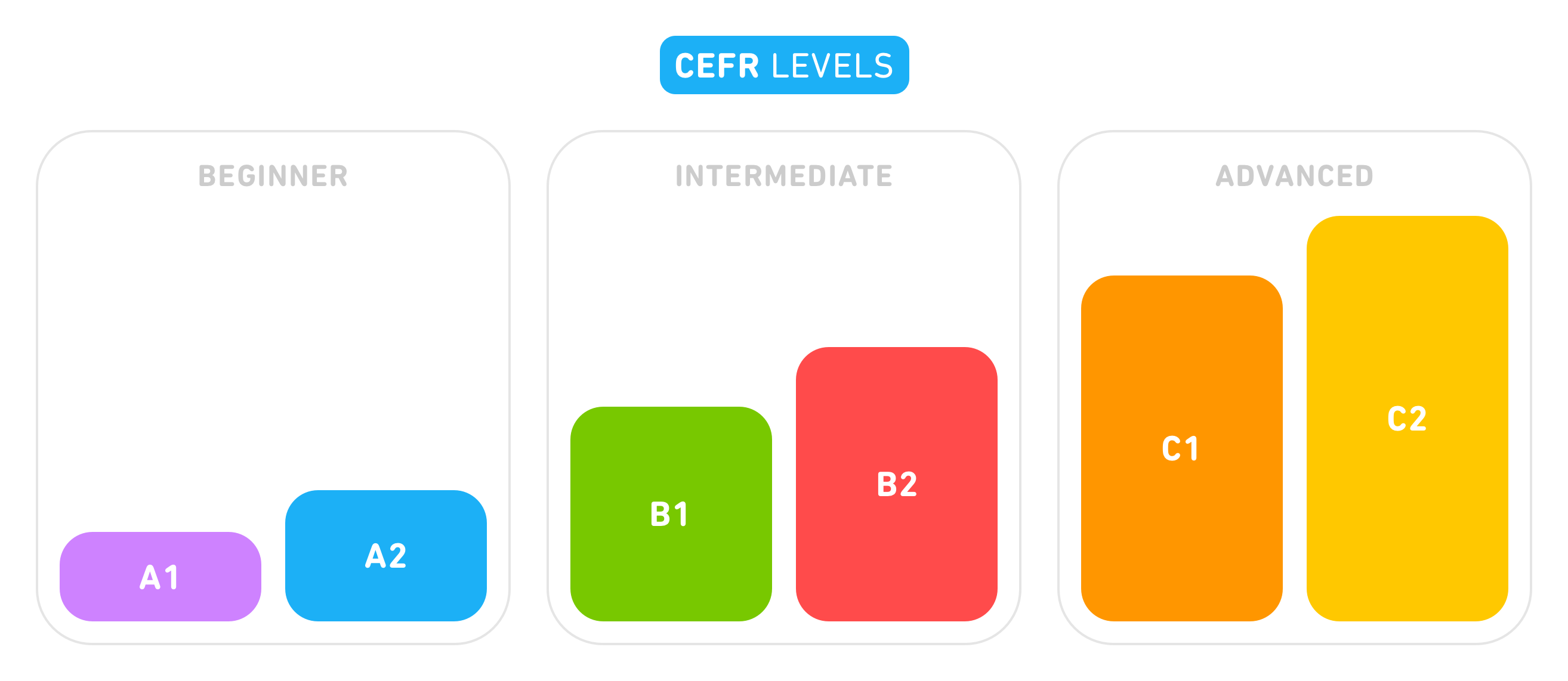
Our new courses now cover all the A1- and A2-level content, with about 800 words introduced at each level; B1-level content is currently under development. Each course is divided into sections so that you can more easily track your progress.
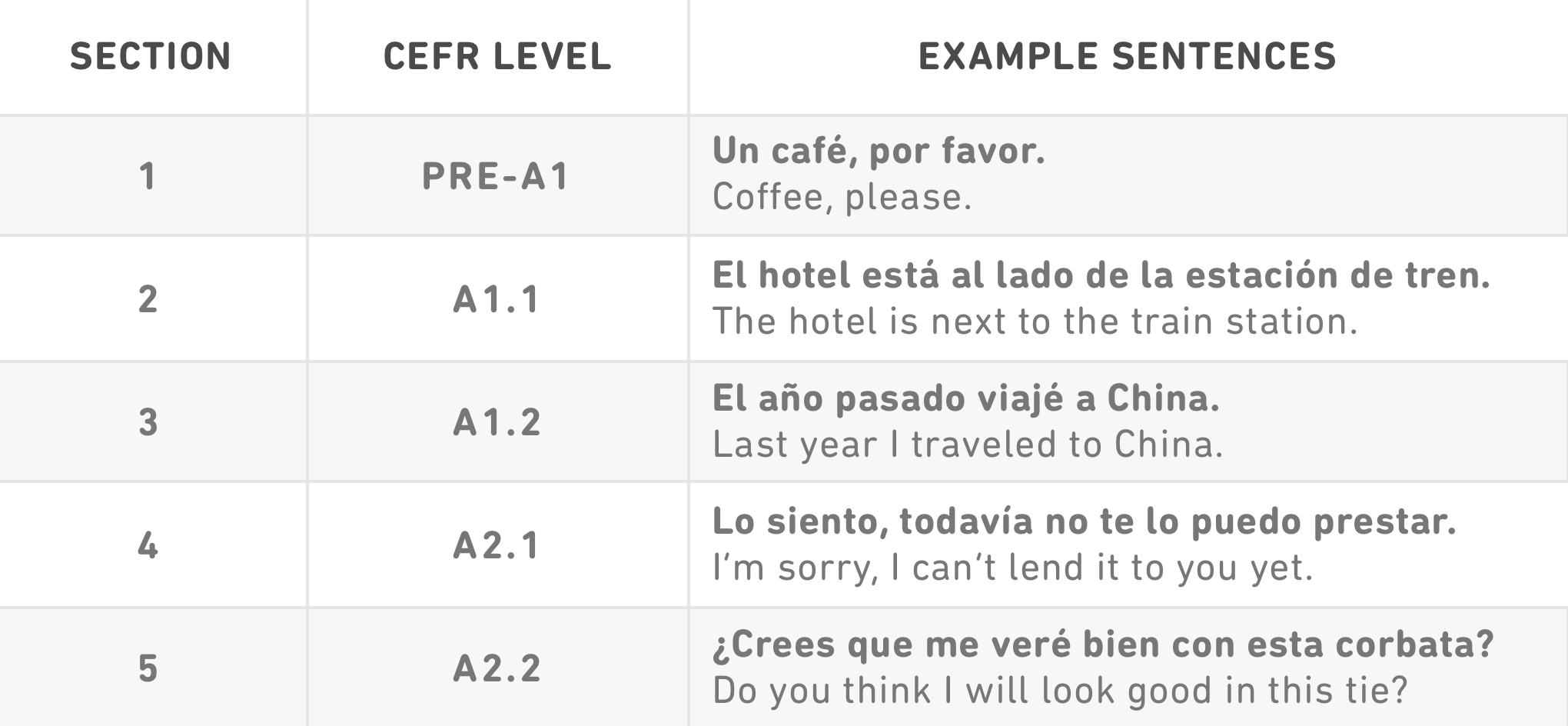
We want all of our courses to meet the CEFR standards so that our learners achieve the benchmarks they need for their personal and professional goals. This means we’re redoing some of our existing courses, developing new courses in new ways, and working with our volunteer contributors to help them apply the CEFR standards to the courses they create.
Quick & helpful tips
Tips are a recent addition to our courses. They provide short explanations of tricky concepts to help our users learn. They are fun and to the point, and they use tons of eye-catching and quirky images! Read more in our previous blog post.
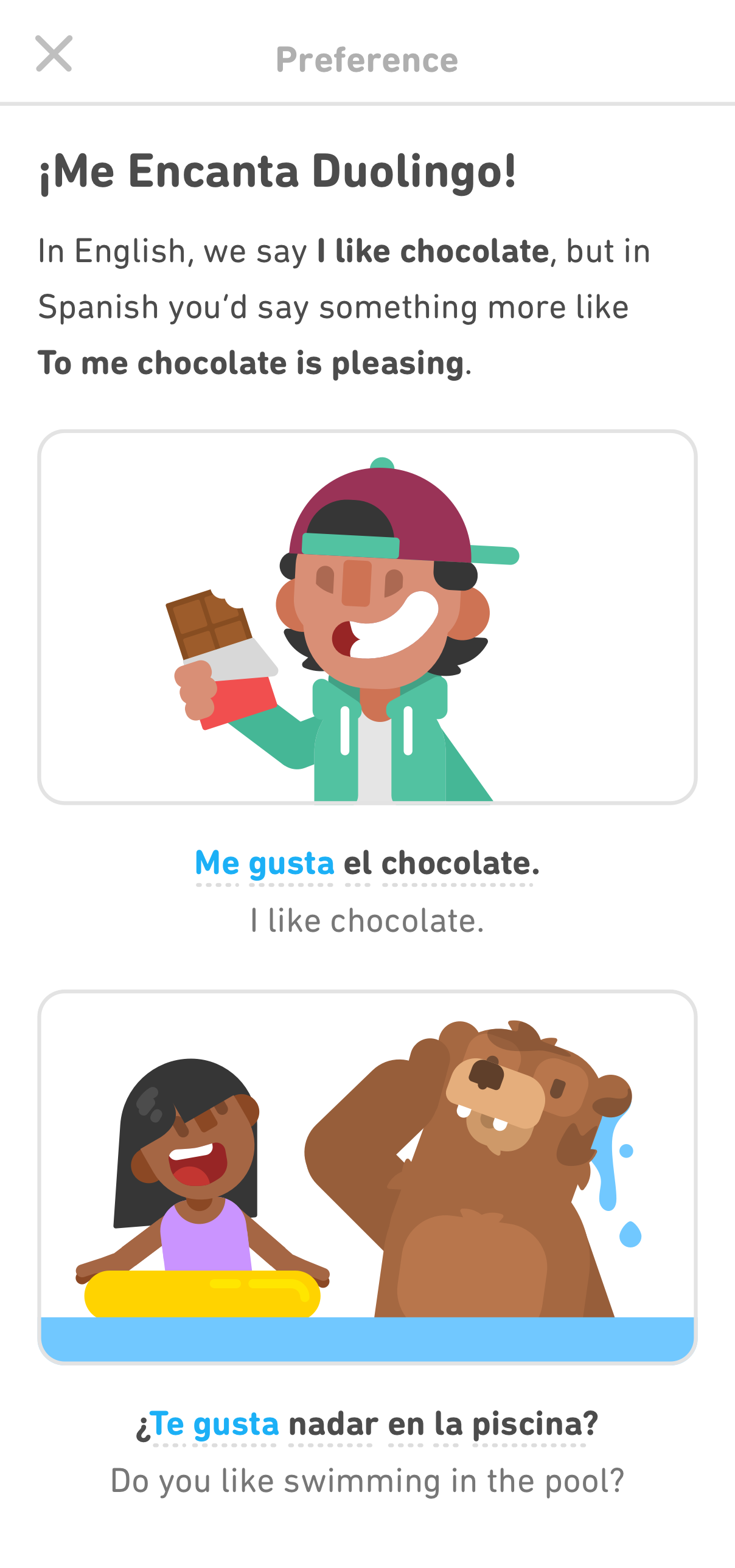
Why add Tips?
Research shows that learning a new language is most effective when it’s a combination of implicit and explicit instruction. Duolingo’s methodology has focused on teaching implicitly: that is, promoting learning through repeated exposure to language structures in whole phrases and sentences, rather than extensive explanations and repetitive drills. But explicit instruction, like our Tips, also has its place — it helps draw learners' attention to the parts of the language they would have a hard time noticing or understanding from exposure alone. Our Tips include simple grammar rules (e.g., verb conjugation), pronunciation pointers, and explanations of concepts that just aren’t intuitive (e.g., Spanish “tú” vs. “usted”). Check them out!
Improved in-app assessment
We care about the effectiveness of our courses, which is why we’re also improving the way we assess how much our users are learning. In our CEFR-aligned courses, users now take a quiz at the end of each section, which tests how well they know the material taught in that section. The quiz itself is aligned with the CEFR, which means that it helps us assess how much our users know relative to the standard.
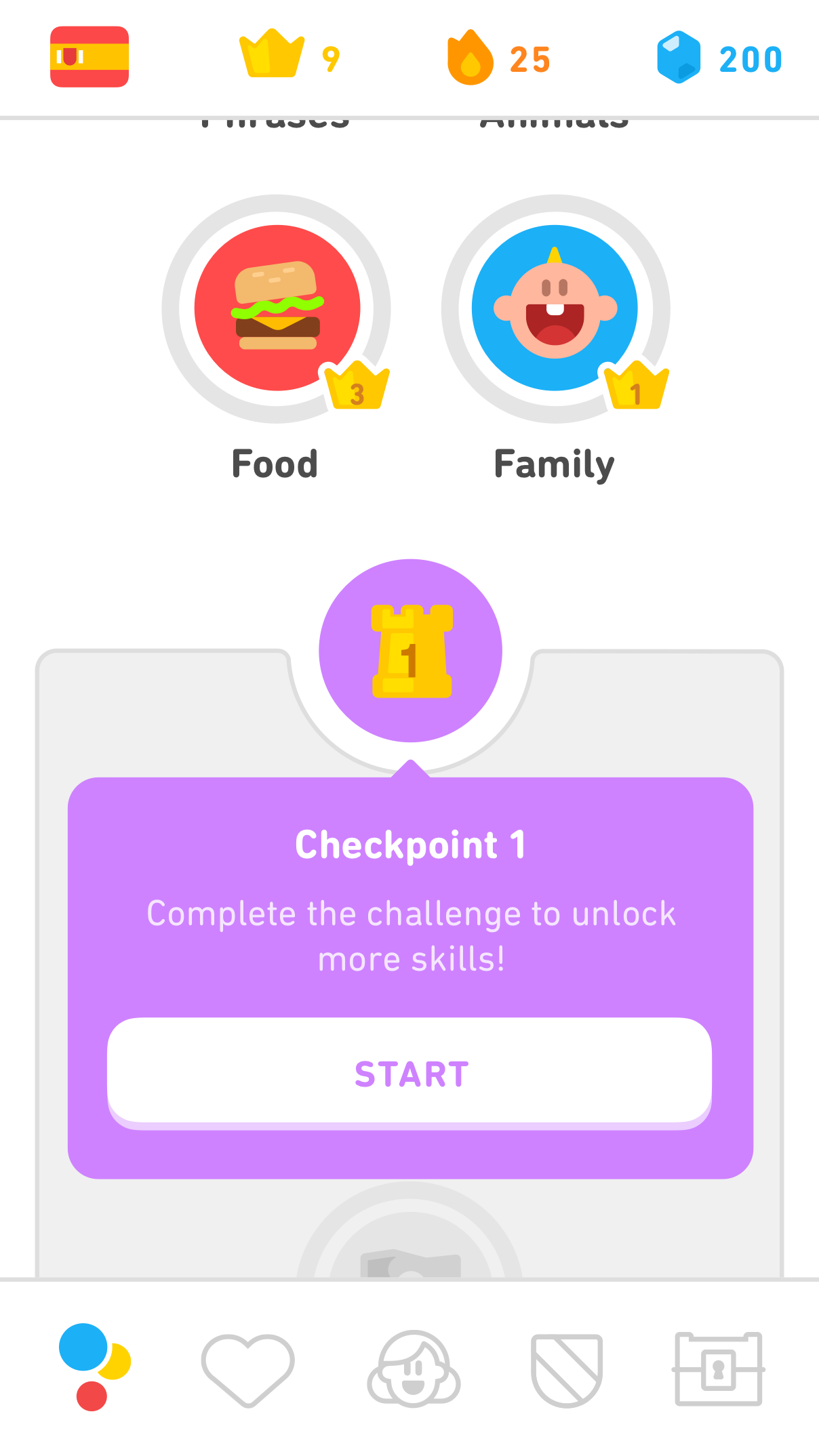
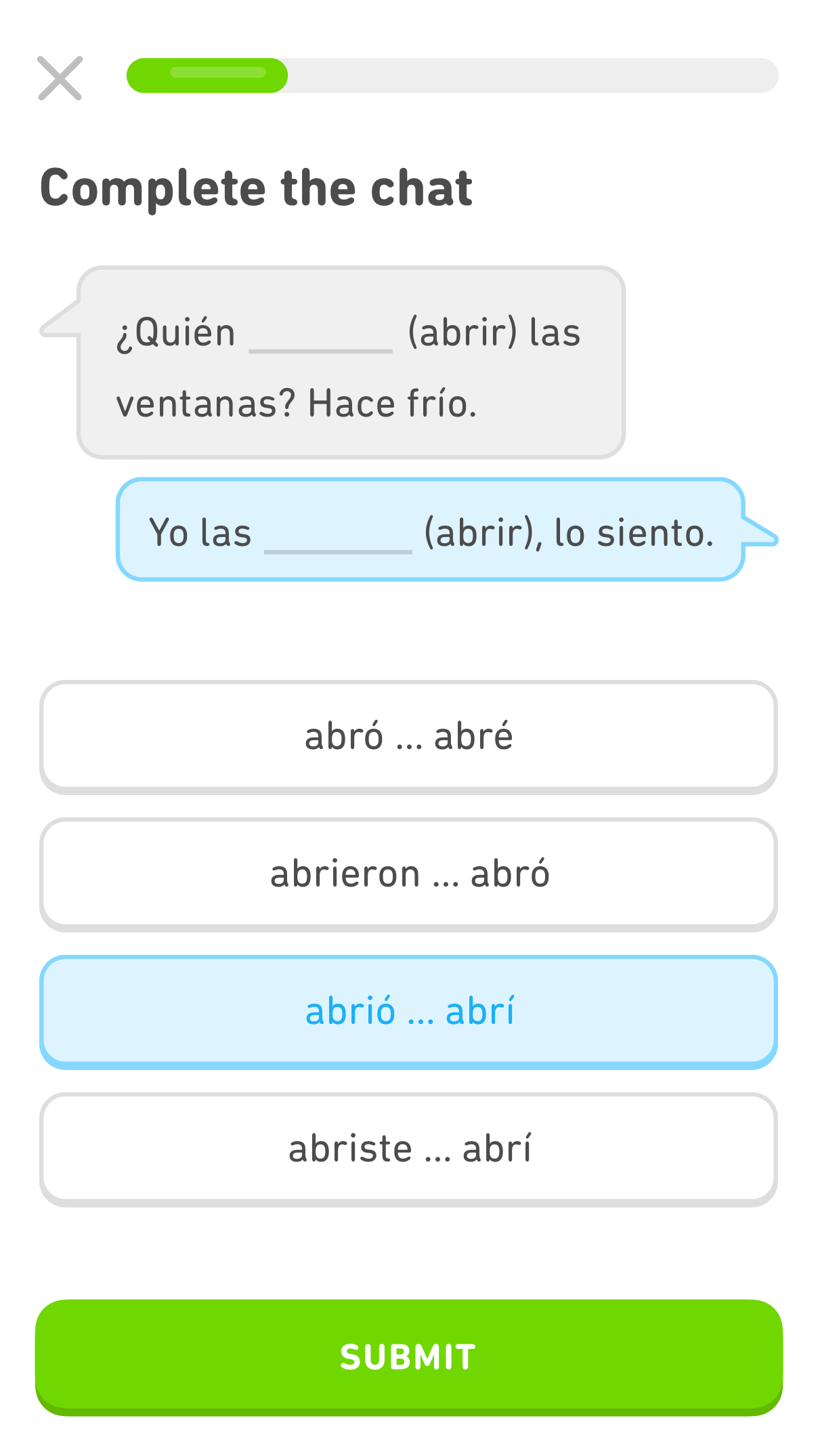
How do we use the quiz results?
Duolingo learners’ answers help us determine how well we’re teaching different concepts, such as the past tense or the vocabulary needed to order at a restaurant. We didn’t want the quiz to be too cumbersome, so each learner only answers 15 questions out of our large question pool. This isn’t enough to assess the progress of any one person, but — with the millions of learners on Duolingo — we can use the overall data to see what most users have difficulty with.
These results help us figure out what we need to teach better, and thus guide future changes to the curriculum and the whole learning experience. For example, we noticed that learners of Spanish tend to make mistakes with the Spanish “me gusta” (“I like”): instead of saying “Me gusta el chocolate”, they might say “Yo gusto el chocolate”. Based on these data, we’re now planning to add more practice for this specific structure to our Spanish course.
Stay tuned for even more course improvements in the future! We’ll be adding CEFR B1-level content to our Spanish, French, and English courses (about 2,000 more words in each!), up to A2-level content in other courses (like German, Italian, Chinese, and Japanese), and more overall practice with the basic four skills: listening, reading, speaking, and writing.
English for speakers of Spanish or Portuguese. ↩︎
